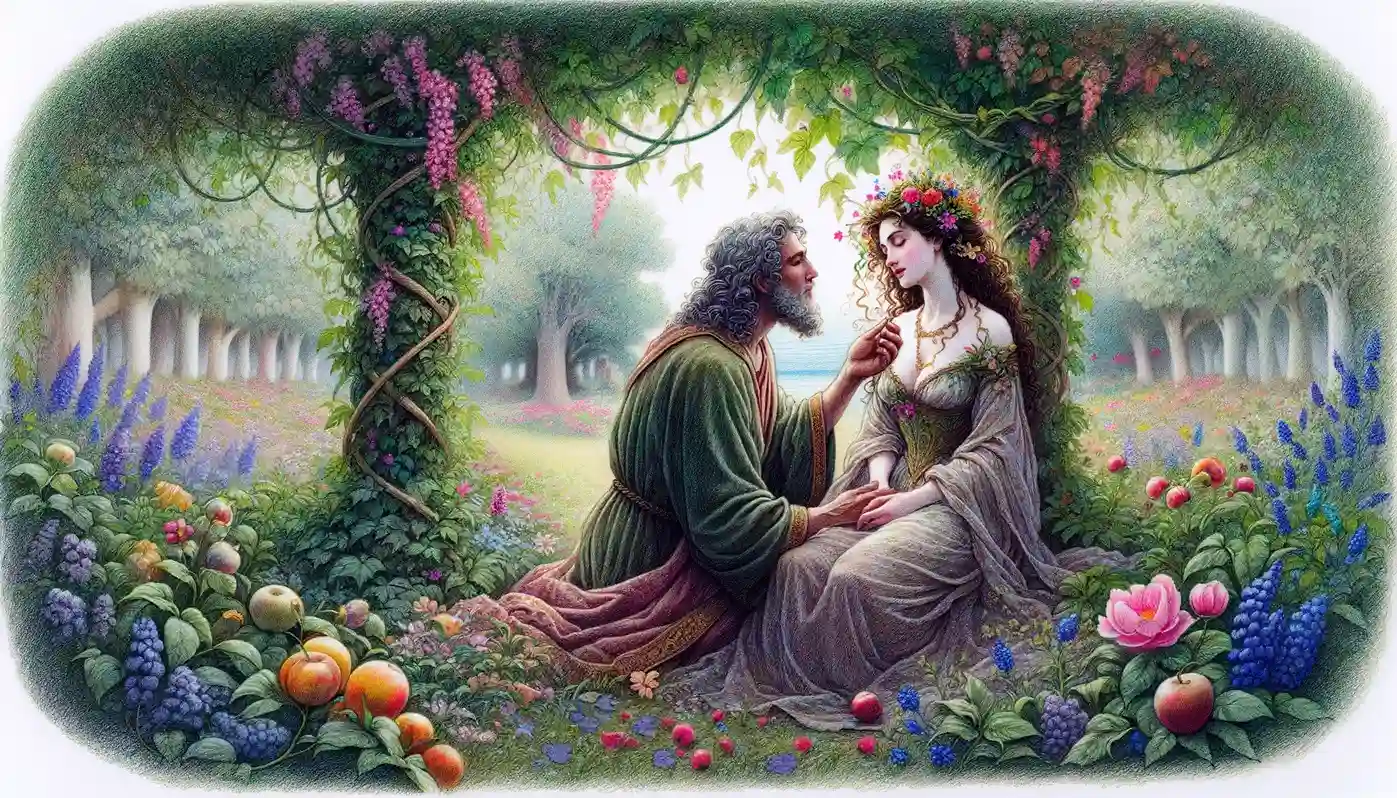
The Book of Song of Solomon
The Book of Song of Solomon, also known as the Song of Songs or Canticles, is a unique and poetic book in the Hebrew Bible and the Christian Old Testament. Here are some concise key facts about the Song of Solomon:
- Title and Position: Known as “Song of Songs,” which is a superlative Hebrew expression indicating “the best song.” It is part of the Ketuvim (Writings) in the Hebrew Bible and is usually placed among the Megillot (Scrolls) and read during the festival of Passover.
- Authorship and Date: Traditionally attributed to King Solomon based on references within the text itself, although this is debated among scholars. The composition date is also uncertain, with estimates ranging from the 10th century BC during Solomon’s reign to a later period in the 4th century BC.
- Structure and Content: The book is a collection of lyric poems that take the form of dialogues between a bride (Shulamite woman) and her bridegroom (often interpreted as Solomon), with occasional interjections by friends or a chorus. The structure is fluid, characterized by rich imagery and figurative language that celebrates the beauty and power of romantic love.
- Main Themes:
- Romantic Love: The Song of Solomon is foremost a celebration of romantic love, portrayed in an idyllic and passionate manner.
- Physical Beauty and Desire: Extensive and elaborate descriptions of physical beauty and mutual desire dominate the text, emphasizing the physical and emotional aspects of love.
- Nature and Fertility: The imagery of gardens, flowers, and natural settings is frequently used to symbolize beauty, growth, and fertility.
- Theological Significance:
- While the Song of Solomon does not explicitly address theological issues or mention God, it has been interpreted allegorically throughout much of Jewish and Christian history, representing God’s love for Israel or Christ’s love for the Church.
- It can also be seen as an affirmation of the goodness of human love and sexuality as part of God’s creation.
- Modern Relevance: The Song of Solomon remains relevant today as a profound expression of human love and desire, providing a poetic exploration of the complexity and depth of intimate relationships.
The Book of Song of Solomon, also known as Song of Songs or Canticles, is an exquisite collection of love poems that stand unique within the biblical canon for their celebration of romantic love. This book delves deeply into the expressions of affection between lovers, utilizing rich and often sensual imagery to convey its themes. Here is a detailed analysis of the Song of Solomon, exploring its structure, content, major themes, and theological implications.
Structure and Content
1. Poetic Dialogues and Imagery:
- The book is predominantly structured as a series of lyrical poems involving two main characters: a woman (commonly referred to as the Shulamite) and a man, who is often thought to be Solomon. These poems are fluid and sometimes ambiguous, with shifts in speaker and locale that can be interpreted in various ways.
2. Opening Expressions of Desire and Love (Chapters 1-3):
- The text opens with the woman expressing her deep desire and affection for her lover, praising his desirability over other men. The man reciprocates with compliments on her beauty, using metaphors drawn from nature and the richness of the environment around them.
3. Celebration of Marriage and Intimacy (Chapters 4-5):
- The man describes his bride in an extended metaphor that compares parts of her body to various plants, animals, and landscapes, celebrating her physical beauty and his anticipation for their union.
- This section also includes the woman’s dream sequence where she searches for her lover, emphasizing her strong desire for him.
4. Affirmations of Love and Mutual Desire (Chapters 6-8):
- The latter parts of the book continue with the themes of mutual admiration and desire. The couple’s bond is shown to be exclusive and profound, with the woman asserting that love is as strong as death and unquenchable even by vast riches.
Major Themes
1. Romantic Love:
- The primary theme of Song of Solomon is the joy and beauty of romantic love, celebrated in an open and expressive manner. The poems articulate a deep and passionate love between the couple, exploring both the physical and emotional dimensions of their relationship.
2. Beauty of Nature:
- The natural world is a constant backdrop in the poetry, with references to landscapes, flora, and fauna enriching the descriptions and symbolizing the vitality and beauty of the lovers’ affection.
3. Exclusivity and Commitment:
- The love depicted in the Song is not only passionate but also deeply committed. The lovers speak of their desire to belong solely to each other, illustrating a profound level of mutual commitment and fidelity.
Theological Significance
1. Allegorical Interpretations:
- Historically, Jewish and Christian interpreters have often viewed the Song of Solomon allegorically. In Jewish tradition, it represents the love between God and Israel, while in Christian exegesis, it has been seen as symbolizing the relationship between Christ and the Church.
2. Celebration of Human Love:
- Theologically, the book can be seen as a divine affirmation of human love as a reflection of God’s own love, celebrating the goodness of creation and the sanctity of marriage.
Conclusion
The Song of Solomon offers a rich tapestry of poetry that transcends the mere celebration of human romance, touching on themes of loyalty, beauty, and spiritual metaphor. Its inclusion in the biblical canon underscores the importance of human relationships in the broader spiritual and theological discourse, providing a complex, multifaceted view of love that continues to inspire and intrigue readers across generations.
Tag:allegorical interpretations, beauty, biblical literature, Canticles, celebration of love, Christian exegesis, commitment, desire, divine love, erotic poetry, exclusivity, fidelity, Hebrew Bible, human relationships, intimacy, Jewish tradition, love poems, marriage, metaphors, nature imagery, Old Testament, passion, poetic dialogue, romantic love, sensuality, Shulamite woman, Solomon, Song of Solomon, Song of Songs, spiritual metaphor.



